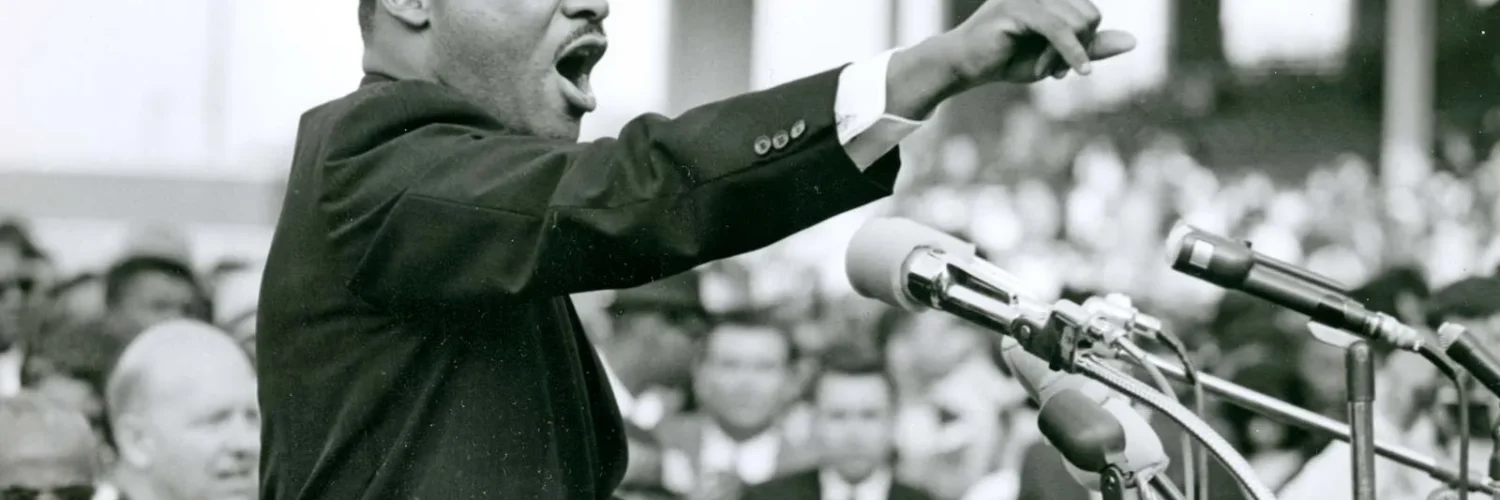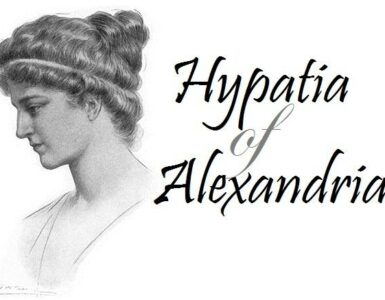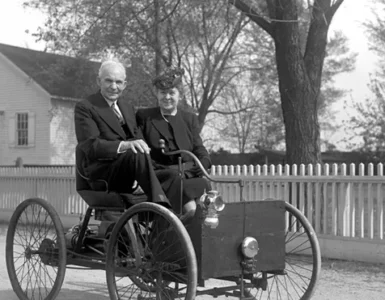Martin Luther King Jr. stands as one of the most influential leaders in American history and the world. A Baptist minister and social activist, King led the Civil Rights Movement in the 1950s and 1960s, advocating for racial equality, justice, and non-violent protest against racial segregation and discrimination. His legacy is marked by his famous “I Have a Dream” speech, his commitment to civil rights for African Americans, and his fight for equality for all people. This article explores Martin Luther King Jr.’s life, his impact on American society, and his lasting influence on movements for social justice.
Early Life and Influences
Martin Luther King Jr. was born on January 15, 1929, in Atlanta, Georgia, into a deeply religious family. His father, Martin Luther King Sr., was a Baptist minister, and his mother, Alberta Williams King, was a schoolteacher. Growing up in the segregated South, King experienced the harsh realities of racism and discrimination from a young age. These experiences, combined with the influence of his father’s ministry, helped shape his values of justice, equality, and the belief in the power of non-violent action.
King was a bright student and went on to attend Morehouse College in Atlanta at the age of 15. After graduating, he attended Crozer Theological Seminary in Pennsylvania, where he further developed his understanding of theology and social justice. King’s belief in non-violence and peaceful resistance was deeply influenced by Mahatma Gandhi’s philosophy of Ahimsa, and he admired Gandhi’s use of non-violent protests in India’s struggle for independence.
A Call to the Civil Rights Movement
In 1954, Martin Luther King Jr. became the pastor of the Dexter Avenue Baptist Church in Montgomery, Alabama. It was in Montgomery that King’s leadership in the Civil Rights Movement began to take shape. In 1955, Rosa Parks, an African American woman, was arrested for refusing to give up her seat to a white passenger on a segregated bus. This incident sparked the Montgomery Bus Boycott, a massive protest against the city’s segregated bus system.
King was chosen as the leader of the boycott, which lasted for over a year, drawing national attention to the Civil Rights Movement. He advocated for peaceful protest and non-violent resistance, encouraging African Americans to refuse to ride buses until they were desegregated. The boycott ended successfully in 1956 when the Supreme Court ruled that segregation on public buses was unconstitutional.
This victory marked King as a prominent leader in the struggle for civil rights, and he went on to help found the Southern Christian Leadership Conference (SCLC) in 1957, an organization that aimed to advance civil rights using non-violent methods.
The Fight for Civil Rights and Non-Violent Protest
Throughout the 1960s, Martin Luther King Jr. continued to lead the Civil Rights Movement, advocating for desegregation, voting rights, and social justice. He organized peaceful protests, sit-ins, and marches to challenge racial segregation in various parts of the United States, particularly in the deeply segregated South.
One of the pivotal moments in King’s career was the Birmingham Campaign of 1963. The campaign was a series of non-violent protests against segregation in Birmingham, Alabama, which was one of the most segregated cities in America at the time. The demonstrations were met with violent responses from the police, who used dogs, water hoses, and arrests to suppress the protestors. The brutality of the police response was broadcasted on television, shocking viewers nationwide and gaining sympathy for the Civil Rights Movement.
During his time in jail for his participation in the Birmingham protests, King wrote the famous “Letter from Birmingham Jail”, in which he defended the urgency of civil rights action, arguing that “injustice anywhere is a threat to justice everywhere.”
The March on Washington and “I Have a Dream”
One of the most historic moments in the Civil Rights Movement was the March on Washington for Jobs and Freedom on August 28, 1963. This march was one of the largest civil rights rallies in U.S. history, drawing over 250,000 people to the Lincoln Memorial in Washington, D.C. The purpose of the march was to advocate for civil and economic rights for African Americans, as well as to pressure the U.S. government to pass meaningful civil rights legislation.
It was here that King delivered his most famous speech, the “I Have a Dream” speech. In this speech, King articulated his vision of an America where all people, regardless of race, would be treated as equals and live together in harmony. He spoke of a future where his children would “not be judged by the color of their skin but by the content of their character.” The speech became a defining moment of the Civil Rights Movement and is remembered as one of the greatest speeches in history, inspiring generations to come.
Civil Rights Legislation and Nobel Peace Prize
The Civil Rights Movement, with King’s leadership, helped bring about significant changes in American society. In 1964, the Civil Rights Act was passed, outlawing racial discrimination in public places, employment, and education. This legislation was a significant victory for the movement and a crucial step towards achieving racial equality in the United States.
That same year, Martin Luther King Jr. was awarded the Nobel Peace Prize for his efforts in leading non-violent protests against racial segregation and injustice. At the age of 35, he became the youngest person at the time to receive the award. King donated the prize money to further the cause of the Civil Rights Movement.
The Selma March and Voting Rights Act
In 1965, King led the Selma to Montgomery marches, a series of three protest marches that aimed to secure voting rights for African Americans. The marches were in response to the widespread voter suppression and discrimination faced by Black Americans in the South. During these marches, peaceful protestors were met with violent resistance by police officers and vigilantes, particularly on what came to be known as “Bloody Sunday,” where marchers were brutally attacked on the Edmund Pettus Bridge in Selma, Alabama.
The national outrage over the violence and the perseverance of the protestors led to the passing of the Voting Rights Act of 1965, a landmark law that prohibited racial discrimination in voting, marking another significant victory for King and the Civil Rights Movement.
King’s Shift to Economic Justice and His Assassination
After the success of the Voting Rights Act, King began to focus on issues beyond racial segregation, such as economic inequality, poverty, and workers’ rights. He launched the Poor People’s Campaign, aiming to address economic disparities across racial lines and advocating for economic justice for all Americans. King believed that fighting poverty was crucial for achieving social equality and sought to unite Americans of all races in the fight for better wages, fair housing, and workers’ rights.
In April 1968, King traveled to Memphis, Tennessee, to support a strike by Black sanitation workers seeking better working conditions and fair pay. On April 4, 1968, Martin Luther King Jr. was assassinated while standing on the balcony of the Lorraine Motel. His death sent shockwaves across the nation, sparking riots in numerous cities and deeply affecting the Civil Rights Movement.
Legacy and Impact
Martin Luther King Jr.’s legacy is one of courage, compassion, and the relentless pursuit of justice. He changed the course of American history by leading a movement that demanded equality for African Americans and all marginalized groups. King’s philosophy of non-violence and peaceful protest influenced civil rights movements around the world and continues to inspire those fighting for justice, equality, and human rights today.
King is remembered and honored in countless ways. In 1983, the U.S. government established Martin Luther King Jr. Day, a national holiday observed on the third Monday of January each year to commemorate his life and work. Numerous streets, schools, and monuments are named in his honor, and his teachings are studied as a blueprint for non-violent social change.
Conclusion
Martin Luther King Jr.’s life was a journey dedicated to fighting injustice, racial discrimination, and inequality. From the early days of the Montgomery Bus Boycott to his powerful “I Have a Dream” speech and his advocacy for the poor, King’s leadership and vision were pivotal in advancing civil rights in America. He not only fought for the rights of African Americans but also for a world where all people are treated equally, regardless of race or background.
His dream of an America where people are “judged by the content of their character” continues to inspire movements for social justice and equality today, making Martin Luther King Jr. a symbol of hope, perseverance, and peace.





Add comment